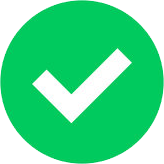Exhaustive Guide to SaaS Application Development for Startups
Software as a Service (SaaS) revolutionizes the way businesses access and utilize software applications. In this section, we delve into the fundamental aspects of SaaS, its significance for startups, and provide an overview of what this guide entails.
SaaS, or Software as a Service, refers to a cloud-based software distribution model where applications are hosted by a third-party provider and made available to users over the internet. For startups, SaaS offers a host of advantages that can significantly impact their growth and success. By leveraging SaaS solutions, startups can access sophisticated software functionalities without the need for substantial upfront investments in infrastructure and licenses. This allows startups to allocate resources more efficiently, focus on core business activities, and rapidly scale their operations to meet evolving market demands.
Throughout this guide, we will explore various facets of SaaS application development, from understanding the key characteristics of the SaaS model to navigating the challenges and considerations inherent in SaaS development for startups. We will discuss the advantages SaaS offers for startups, as well as the potential pitfalls they may encounter along the way.
Understanding the SaaS Model:
Characteristics of SaaS:
SaaS applications, a product of SaaS Application Development, are accessed via web browsers or dedicated interfaces, providing cross-device flexibility. They operate on subscription models, facilitating recurring payments over one-time purchases.
Advantages for Startups:
SaaS offers cost-effectiveness, scalability, and accessibility, sparing startups from upfront costs and enabling seamless growth with evolving needs.
Challenges and Considerations:
Security, data privacy, vendor lock-in, integration complexities, regulatory compliance, and service reliability pose challenges for startups leveraging SaaS applications.
Planning and Pre-Development Phase:
Market Research and Analysis:
In SaaS Application Development, startups conduct comprehensive market research to grasp market dynamics, customer preferences, and competitive landscapes. Insights obtained aid in identifying trends, opportunities, and threats, shaping product strategy and go-to-market plans.
Identifying Target Audience and Needs:
Segmenting the target audience and understanding their needs are crucial. Startups create buyer personas and conduct user interviews to gain insights into customer pain points and preferences, allowing for tailored product features and messaging.
Defining Product Vision and Goals:
Startups articulate a clear product vision and set measurable goals. SMART goals ensure clarity and direction, helping teams track progress and align efforts with business objectives. This guide features prioritization and development decisions.
Designing Your SaaS Application:
User Experience (UX) Design Principles:
In SaaS Application Development, UX design principles are paramount, ensuring usability and effectiveness. These principles emphasize simplicity, consistency, intuitiveness, and accessibility. By adhering to them, startups craft user-centric interfaces within their SaaS applications, elevating user satisfaction.
Wireframing and Prototyping:
Wireframes and prototypes visualize layout and simulate user experience, facilitating feedback and iteration before development. Startups use these tools to refine design, gather stakeholder input, and enhance usability.
UI/UX Best Practices for SaaS:
UI/UX best practices prioritize functionality and usability, emphasizing clear navigation, consistent branding, responsive design, and intuitive workflows. By implementing these practices, startups engage users, streamline workflows, and drive adoption and retention.
Technical Development Essentials:
Choosing the Right Technology Stack:
Evaluate programming languages, frameworks, databases, and infrastructure services aligned with project requirements and scalability needs for SaaS application development.
Scalability and Performance Considerations:
Design architecture with scalability in mind, using horizontal scaling, load balancing, and caching to handle traffic spikes. Implement performance optimization strategies like code optimization, database indexing, and CDNs for responsive user experiences.
Security Measures and Compliance:
Implement robust security measures including encryption, secure authentication, and RBAC. Conduct regular security audits and ensure compliance with industry regulations like GDPR, HIPAA, and PCI DSS to protect user data and maintain trust.
Agile Development Methodology:
In SaaS Application Development, Agile methodology emphasizes iterative development, collaboration, and flexibility. It prioritizes delivering functional software increments quickly, fostering customer satisfaction, transparency, and continuous improvement.
Scrum, Kanban, and Lean Practices:
- Scrum: Structured framework with sprints, self-organizing teams, and regular reviews.
- Kanban: Visual workflow management system emphasizing WIP limits and flow optimization.
- Lean: Principles focus on waste elimination, process optimization, and customer value.
Implementing Agile in SaaS Development:
- Establish cross-functional teams with clear roles.
- Adopt Agile ceremonies like sprint planning and daily stand-ups.
- Prioritize backlog items based on feedback and business value.
- Embrace iterative development and gather user feedback.
- Foster collaboration among stakeholders.
- Continuously assess and adapt processes for improvement.
Testing and Quality Assurance:
Importance of Testing in SaaS:
- In SaaS Application Development, testing ensures the reliability, functionality, and security of SaaS applications.
- Identifies issues before deployment, validating performance and user experience.
- Builds user confidence, enhances reputation, and reduces risks of downtime and breaches.
Types of Testing (Unit, Integration, User Acceptance):
- Unit Testing: Tests individual components to identify bugs early.
- Integration Testing: Verifies seamless interactions between modules.
- User Acceptance Testing (UAT): Validates functionality and usability from the user’s perspective.
Automated Testing Tools and Strategies:
- Test Automation Frameworks: Structured approach for test case management and execution.
- Continuous Integration and Continuous Testing (CI/CT): Automates build, test, and deployment processes.
- Performance Testing Tools: Simulates real-world user traffic to measure responsiveness and scalability.
- Security Testing Tools: Identifies vulnerabilities and compliance issues within the application’s infrastructure and codebase.
Deployment and Launch Strategies:
Cloud Deployment Options (AWS, Azure, Google Cloud):
- In SaaS Application Development, AWS, Azure, and Google Cloud provide scalable infrastructure for hosting SaaS applications.
- Each platform provides services tailored to SaaS needs, with factors like cost, performance, and security to consider.
- Startups leverage cloud options for scalability, cost optimization, and high availability.
Beta Testing and Early Access Programs:
- Gather feedback from select users pre-launch.
- Beta testers provide insights for usability and functionality improvements.
- Early access programs generate buzz and attract early adopters, fostering community engagement.
Marketing and Launch Campaigns:
- Create compelling content highlighting SaaS benefits and features.
- Utilize targeted advertising, social media, and influencer outreach.
- Offer special promotions and incentives to encourage sign-ups and conversions.
- Craft a comprehensive marketing strategy for maximum visibility and momentum.
Post-Launch Considerations:
Customer Support and Feedback Mechanisms:
- In SaaS Application Development, establish robust support channels such as email, chat, and knowledge bases to address user inquiries, troubleshoot issues, and provide timely assistance.
- Leverage feedback mechanisms such as surveys and user forums to gather insights.
- Actively address user inquiries and troubleshoot issues to improve satisfaction and loyalty.
Continuous Improvement and Iteration:
- Embrace a culture of continuous improvement and iteration.
- Regularly assess performance, gather feedback, and identify enhancement opportunities.
- Release updates and introduce new features incrementally to remain competitive and responsive.
Monitoring and Analytics for Performance Tracking:
- Implement monitoring tools and analytics platforms to track KPIs and user behavior.
- Monitor application uptime, response times, and error rates in real-time.
- In SaaS Application Development, leverage analytics data to inform data-driven decisions and prioritize product enhancements, fostering optimal user experiences and driving business growth.
Scaling Your SaaS Business:
Growth Strategies for Startups:
- Market Penetration: Expand market share through aggressive marketing and differentiation.
- Product Diversification: Develop complementary features to broaden appeal.
- Geographic Expansion:
- In SaaS Application Development, enter new markets by adapting to local preferences and regulations, ensuring compliance and relevance to diverse user bases.
Scaling Infrastructure and Operations:
- Cloud Adoption: Utilize AWS or Azure for flexible infrastructure.
- Automation: Streamline operations with deployment and management tools.
- Scalable Architecture: Design systems for horizontal scalability and fault tolerance.
Expanding User Base and Features:
- User Acquisition: Utilize SEO, content marketing, and referral programs.
- User Engagement: Enhance experience with personalized features and gamification.
- Continuous Feature Development: Iterate based on user feedback to stay competitive.
SaaS application development demands strategic planning and a customer-centric approach, where startups prioritize user needs and market dynamics. Key considerations such as market research, scalability, and user engagement shape the development process. As future trends like AI integration and microservices architecture emerge, startups must adapt to remain competitive in SaaS application development. Prioritizing continuous improvement and security ensures long-term success. With these insights, startups can navigate the dynamic SaaS landscape, fostering sustainable growth and innovation.
At Zaigo Infotech, we meticulously analyze, take responsible steps, and stay actively involved in our projects from inception to completion, providing continuous support. As a customer-centric SaaS application development company, we specialize in creating SaaS applications that demand strategic planning and a customer-centric approach, where startups prioritize user needs and market dynamics. Contact us to schedule a quick discovery call and explore how our expertise in SaaS application development can elevate your business.





